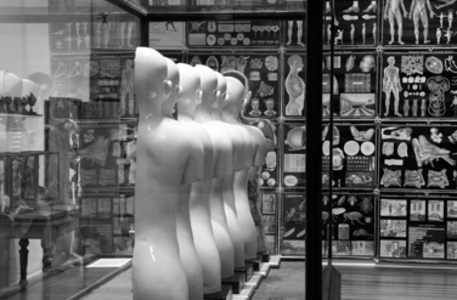Still Life: The Art of Anatomy
Until September 12
The current exhibition at the DPAG is a novel mixture of art and science. Works from public and private local collections and the Otago Medical School are combined to present a diverse exploration of the representation of the human form from nineteenth-century watercolour teaching aids to contemporary photography and mixed media works. And what better place to unite art and science than in Dunedin, home of New Zealand’s first medical school and public art gallery?
Historically, medical science and art were more compatible than today, with the earliest studies in anatomy being recorded by the finest artists and anatomical casts sculpted in papier mâché. Anatomy continues to be a preoccupation in contemporary art, confirming an innate human fascination with the body, though many contemporary works present anatomy less as fact and more as metaphors for expression.
The Art of Anatomy removes the medical works from their scholastic context and, in placing them alongside contemporary works in a gallery environment, encourages and privileges an aesthetic appreciation of their materials and forms. Use of colour, line, scale, and texture become as important as the anatomy they describe. Against the white gallery walls the antique glass cabinets themselves become reminiscent of postmodern art appropriations of this traditional form of viewing. J. H. Scott’s large and detailed watercolours seem perfectly at home spread over the gallery walls – some resemble colourful abstractions. The contemporary works in the show also undergo a change within this new context. In Heather Straka’s fashion photography-inspired The Anatomy Lesson the cadaver becomes less of a prop for the posing Asian girls and more the grim, main focal point.
In her mixed media works, Nicola Jackson’s use of papier mâché creates a link with the first ‘anatomical man’ in the exhibition through their shared medium, and her delicate etchings of organs surrounded by lurid frames with amoeba-like abstract shapes combine the traditional with the contemporary. The dark and disturbing works of Tony Fomison employ the body as inner expression, a sickly, grey, and emaciated frame communicating a troubled mind.
Preoccupation with the human form has created an ever-present link between art and science. Though in medicine the traditional artist has long been outmoded, these seminal artistic studies still fascinate and inspire both the science and art worlds.



